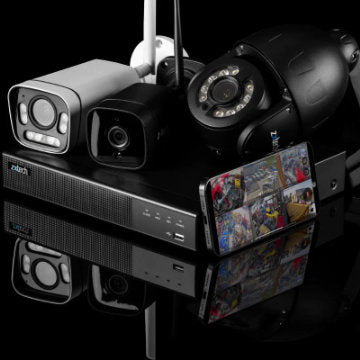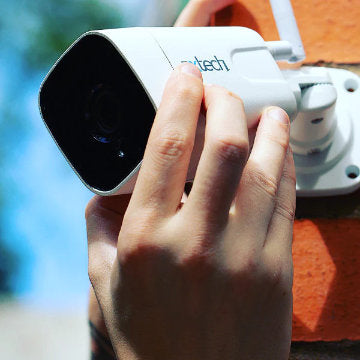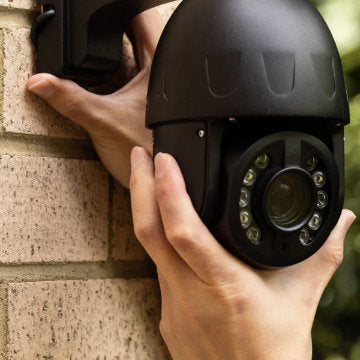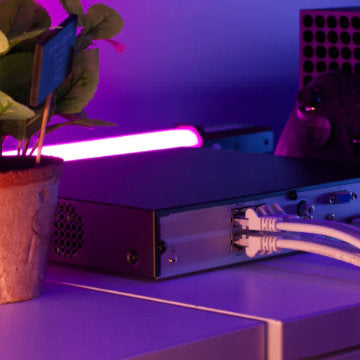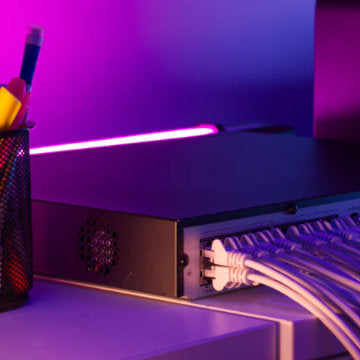Wifi Signal Tips
The best place for a wireless router
Moving your router won't make your Internet connection faster, but it should make it more reliable and stable – which can be important when it comes to video streaming or online gaming.
Below are nine simple steps to help improve your wireless Internet signal:
1. Avoid the kitchen
Aside from the risk of spilling something sticky onto your router, it's not advised to place it anywhere in your kitchen (messy cooks rejoice). As routers use radio signals to operate, electronic appliances and large metal surfaces can absorb and disrupt your signal – microwaves in particular use the same 2.4 GHz channel as Wi-Fi routers, so will actively compete with your wireless signal when used.
2. Place your router centrally
Wireless broadband routers transmit from all directions in a circle. This means the more centrally you can place it, the better your home's overall coverage will be. Putting your router near a window means that you're broadcasting outside as well as inside, and sending some of your strongest broadband connection – quite literally – out the window.
Another reason to place your router in the centre of your home is to avoid anyone else accessing your Wi-Fi – if your connection can't be picked up by devices outside your house, then you're less likely to have your connection compromised.
3. Adjust the antennae
Many wireless routers – especially older models – will include adjustable antennas. It's advisable to tweak these to try and achieve the best reception. As a general rule, if you've placed your router upstairs to try and achieve a stronger signal across two floors, it's best to turn the antennae sideways, and if it's placed on the ground floor, its advisable to turn your antennae upwards.
4. Avoid walls
Thick walls make it harder for your home Internet to be passed from room to room, as walls absorb wireless signal and will reduce the quality of your broadband. Try to place it near open doorways (somewhere with a lot of footfall like your front room for example), as this will allow your broadband signal unobstructed passage to the rest of your home.
5. Place it out in the open
Perhaps a hangover from the days when routers were particularly clunky, some people opt to hide theirs in a cupboard or behind a sofa. A good rule of thumb is to always have your router visible, as placing it in an obscured area will dampen its effectiveness and have a negative impact on your connection.
6. Avoid electronic items
Be aware of the effect of common electronic items within the home when setting up your home broadband. Cordless phones, baby monitors and other devices that use radio signals to communicate are especially problematic, as these devices will crowd the channel and compete with your broadband connection.
7. Do not place it on the floor
Placing a router on the floor can dampen its performance, as the device is sending out signals that are immediately absorbed by the ground. Try elevating your router and placing it on a sideboard or shelf to achieve more comprehensive coverage.
8. Mirrors and fish tanks
It may sound bizarre, but fish tanks and mirrors are also the enemies of home broadband. Water inhibits Wi-Fi signal, so placing your router next to a fish tank is likely to have a negative impact on its stability. Interestingly, this is also while the mobile Internet is sometimes disrupted in busy spaces, as the water in human bodies will also dampen Internet signal.
Placing it near a mirror will also cause the radio waves used to transmit wireless Internet to reflect, which can have a negative impact on performance by scattering and distorting the signal. It's not just mirrored, either, be wary of stainless steel countertops, filing cabinets, or any other flat, reflective surface.
9. Experiment with different locations
Do not settle for the first location you place your wireless router. Experiment by changing the location of your router to see if the signal strength or stability improves on your various devices. This can help you find the perfect spot, so you can achieve the most powerful and reliable Wi-Fi connection possible.


